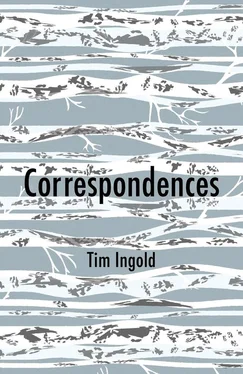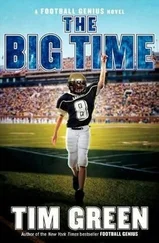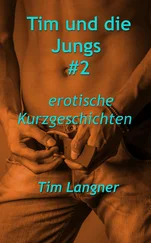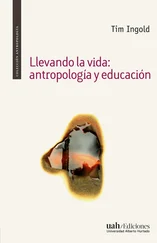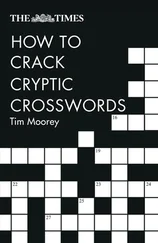Ray and beam, I suggest, afford alternative ways of thinking about light: what it is, how it moves, and how it is apprehended. On the one hand, as ray, it is an energetic impulse that connects a point source to the eye of a recipient, across what could be an immense void of space; on the other hand, as beam, it is an affectation of visual awareness – an explosion that ignites as much in the eye of the beholder as in the world beholden. For in the moment of its apprehension, eye and cosmos become one. If a tree could see, its leaves would be miniature eyes, and the glimmer in each – as it strains to find its place in the sun – would be drawn down twigs and branches into a great beam. Where we onlookers would see a solid trunk, the tree would open in its vision to a world on fire. It would be a creature of the light.
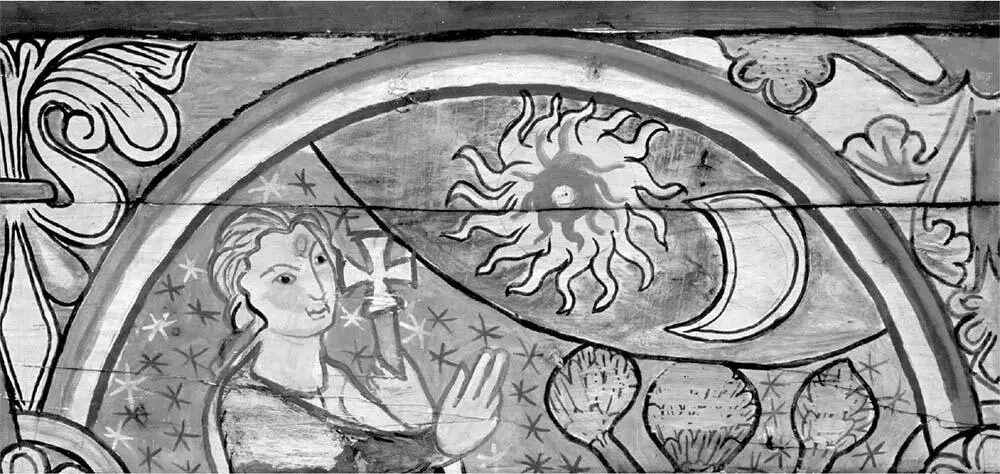
Figure 2 The sun and the moon. Detail from a painting from the wooden ceiling of the stave-church of Ål, in central Norway, dating from the thirteenth century. (Courtesy of the Museum of Cultural History, University of Oslo.)
But it could be a creature of the dark as well. If there are two ways of thinking about light, then darkness, too, can also mean different things. It can mean the darkness of shade, such as when the rays of the sun, striking a solid and opaque body, cast a shadow on the ground, or when, at night, the earth shadows itself. Or it can mean the darkness that comes from putting out the fire. This is not to block the light but to extinguish it. The ‘shadow’ of the beam, if we can call it that, is the material residue that falls from the conflagration. The same tree which had once basked in the sun’s rays and cast a shadow on the ground becomes light in the flames of the fire – as beam rather than rays – and leaves its shadow in the material stuff of ash, charcoal and finally pitch. As ancient and medieval thinkers believed, pitch is born of the element of fire. 3
Of the blackest of black nights, we say it is pitch-dark. But pitch darkness is one thing, the darkness of pitch another. One is defined negatively, by the absence of radiant light, the other positively, by the presence of material substance. Radiant light – the light of the sun – is said to be white. It is what we get by mixing every shade of the visible spectrum, for example by spinning a top decorated with a colour wheel. When the top is at rest we can distinguish the shades; when it spins they merge into white. These shades, corresponding to wavelengths, give us the colours of the rainbow. All the colour is in the light. No light; no colour. Black, then, is as void of colour as it is of light. The manufacture of pitch, however, tells a different tale.
Let’s return, at last, to the tree from which we began. Having cut the trunk for timber, to be sent to the mill, the roots and stump are set alight. What runs out from the light of the fire? Brown tar. What do we get when the tar is boiled to eliminate its water content? Black pitch. As Johann Wolfgang von Goethe famously argued, in his Theory of Colours of 1810, black is not the absence of colour but colour at its most concentrated. 4As pitch is the extract of tar, black is the extract of light: the essence that remains after the light is extinguished. Conversely, to set materials alight is to dilute their colour. So long as the fire burns – like the redwood of Nash’s Black Trunk – the flames and glowing embers give off shades of yellow and red. But once the fire is extinguished, all shades recede into black. The blackness of pitch, then, is an index not of nothingness but of infinite density, from which colours explode in the ignition of our visual awareness. All colour pours from pitch; and all colour eventually falls back into it.
1 1. An earlier version of this essay, under the title ‘Pitch’, was published in An Unfinished Compendium of Materials, edited by Rachel Harkness, University of Aberdeen: knowingfromtheinside.org, 2017, pp. 125–6.
2 2. Oxford English Dictionary, beam, n.1, III. 19a.
3 3. Spike Bucklow, The Alchemy of Paint: Art, Science and Secrets from the Middle Ages, London: Marion Boyars, 2009, p. 60.
4 4. Johann Wolfgang von Goethe, The Theory of Colours, translated by Charles Lock Eastlake, London: John Murray, 1840, p. 206, §502.
Конец ознакомительного фрагмента.
Текст предоставлен ООО «ЛитРес».
Прочитайте эту книгу целиком, на ЛитРес.
Безопасно оплатить книгу можно банковской картой Visa, MasterCard, Maestro, со счета мобильного телефона, с платежного терминала, в салоне МТС или Связной, через PayPal, WebMoney, Яндекс.Деньги, QIWI Кошелек, бонусными картами или другим удобным Вам способом.
